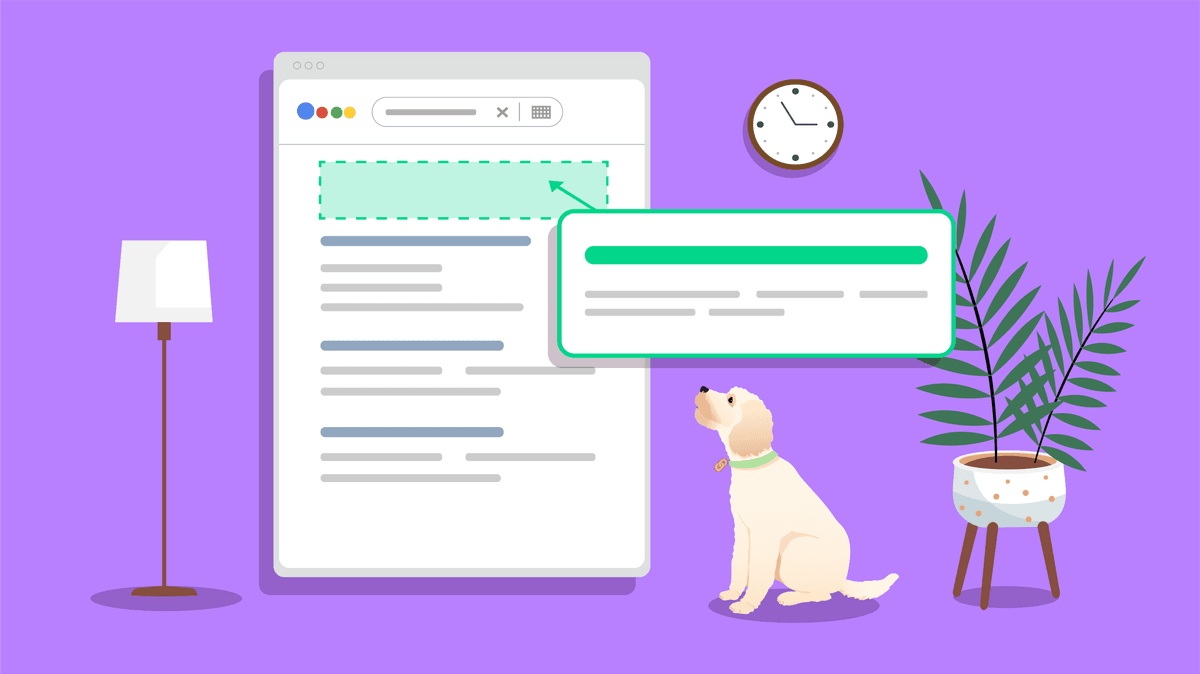
The number of backlinks your website has is one of the most critical factors for driving traffic. That’s because the more backlinks it has, the higher it ranks on Google’s search engine results pages (SERPs).
But quality is more important than quantity when it comes to links. It’s better to have a few high-quality backlinks than many poor-quality ones.
High-quality backlinks are:
Earned
Relevant
From high authority, trusted websites
The best way to build high-quality backlinks is to use white hat link building techniques that adhere to Google’s guidelines.

Buying links or using link building schemes or other black or grey hat link building techniques will result in lower-quality links.
Generating high-quality backlinks will take longer but will drive more traffic to your site in the long run.
This article details what high-quality backlinks are and how you can get more of them for your website.
Key takeaways:
Quality backlinks are earned and relevant from websites with high authority scores.
You are more likely to build high-quality backlinks from white hat link building techniques than grey or black hat ones.
Generating quality backlinks will take longer but drive more traffic to your site in the long run.
PR campaigns, linkable assets, HARO, image linking, guest posting, and finding unlinked mentions are all great ways to earn quality backlinks.
High-Quality Backlinks Are ‘Earned’
You will never directly pay for quality backlinks. The owner of the linking website should have chosen to link to your content because it offers value.
Paying for links or manipulating a website owner to insert them is against Google’s rules. By using these tactics, you are trying to trick search engines into thinking that your content is better respected than it is.
Most of the time, Google will simply ignore links that it thinks have been purchased. However, in some cases, it may give you a rankings penalty.
The only time that you might pay for links is when using a link building service like ours. In this case, you have not paid for the link directly. Instead, you have paid for someone to find opportunities to build quality backlinks on your behalf.

High-Quality Links Come from Relevant Sources
Search engines will assess the websites and pages that link to your website to check that the subject matter matches. This is to ensure that the link has been made naturally.
Imagine if your website is about guitar lessons, and you have two links to your homepage. One is from a local guitar shop, and another is from a travel blog.
The guitar shop’s website is highly relevant to what you do and would be considered a better quality link by the search engine.
If a backlink is completely irrelevant, Google may decide that you have purchased it or got it through a link building scheme, in which case it would be ignored.

Quality Backlinks Come from High Authority Sites
Most SEO tools like SEM Rush, Moz, and Ahrefs assign every website an authority score from 1-100.
This rating reflects the website’s reputation as a thought leader or a source of valuable content in its niche or industry.
If you have many backlinks from high-authority websites, Google will rank your website higher on the SERPs.

That’s because these backlinks tell Google’s algorithm that many fantastic sources trust your website.
High authority on its own doesn’t define a quality backlink. There are plenty of websites out there that use their high authority as a way of selling links.
This link trading is against Google’s policy; any link generated this way isn’t a quality backlink.
Google will ignore a link if it thinks it isn’t earned or relevant, no matter how high the authority score.
Equally, low authority links are not necessarily poor quality. If you have a backlink from a website that is earned and relevant but has low authority, it will still improve your ranking, but not as much as a high authority site would.
How to Get Quality Backlinks with Link Building
There are a number of ways to get quality backlinks for your website. These include:
1) Generate PR Backlinks Through Campaigns
Sometimes known as PR outreach or skyscraper links, PR backlinks are widely considered to be the best quality backlinks you can get.
There are three reasons for this:
They are natural
They are earned from producing valuable, quality content
They usually come from high authority news websites
You need to come up with amazing content to land PR backlinks. This takes time and resources and is usually expensive.
There’s also no guarantee that your pitch will be successful. Journalists are inundated with great content from businesses, so yours might be rejected even if it’s good.
There are two ways to get PR backlinks:
Pitch a story to a journalist, who then picks up the story if they like it
Send your story to an automated press release service
The latter will see your content published on websites that spin out hundreds of releases daily. Google recognizes that these websites are not relevant or of good quality. Being published on these websites will not give you quality backlinks.
The process for getting PR backlinks is simple. Come up with a great idea that the website will want to publish and then pitch it to a journalist or a website editor. They’ll either reject the idea or get back to you with more details on what they need.
The real challenge is coming up with content that will interest them. You’ll need to be original and creative. Usually, this involves doing some additional research and development work.
An excellent example of this is a campaign we created for an accounting institute. We created a timeline of tax evasion claims centered around Donald Trump. This took some additional research and design work, but it paid off.
At the time, Trump was the U.S. president, so we were able to build high-quality backlinks from authoritative sites like Slashdot and Mashable.
Good PR campaigns take creativity and perseverance. You might have to try a few ideas that don’t work first. Read our article on how we achieve PR backlinks for more information.
2) Create Linkable Assets
Linkable assets are content or resources that are so good that other websites will want to link to them. This makes them excellent sources of quality links.
Good linkable content has a practical use and long-term value. This can include:
Reports and original research
Statistics lists
Online tools
Guides
Resource roundups
Like PR backlinks, linkable asset campaigns involve outreach. But this time, you’ll reach out to other blogs and websites rather than publications.
Avoid contacting link farms, PBNs, and other link building scams, as these won’t give you quality backlinks.
The websites you contact might ask you for payment for a link. Paying for links is against Google’s guidelines but is standard practice in some industries. It is up to you if you want to do this.
We managed a great linkable content campaign for our client Identity Guard.
We researched ideas that would be useful for Identity Guard’s industry and draw significant search traffic.
We came up with the idea of dark web monitoring. Once the campaign content had been produced, we found relevant news sites and reached out to them.
- https://linkbuilder.io/affiliate-site-backlinks/
https://backlinko.com/high-quality-backlinks#build-links-from-outdated-resources
3) Attract Image Links
Image link building is a long-term strategy but will attract quality links if done correctly.
Best of all, it’s passive and requires little effort once set up.
Image link building is when you create quality, relevant images that people want to share or use.
For this strategy to be successful, you need to set up your images so that a link to your website is published when someone shares them.
The types of images that people like to share include:
Infographics
Logos, badges, and banners
Product photos
Graphs, charts, and statistics
Maps
Here’s how to set up an image link building campaign.
Analyse competitor images - Keep an eye on what works for your competitors all year round. This will give you a sense of which images will work for your campaigns.
Use Google Trends - Google Trends is a great way to see what kind of image content people will be interested in sharing.
Narrow your search - Use tools like Answerthepublic and Keywordtool.io to narrow your list of potential keywords. Both of these tools have free and paid-for versions.
Use keywords with link intent - Look up your long-tail keywords on Google and find images that could work for your niche. Find out who links to these images and target these websites with an outreach campaign.
Create unbranded images - The people using your images are not interested in promoting your brand. They’ll probably steer clear of branded images, as it will make their content look like you sponsor it.
Optimize your images - This involves adding relevant titles that include your keywords for image fields. This will help Google understand what the image is. These fields include:
Alt text: use this to describe the image
Title: a short explanation of the image. Include keywords
Image filename: again, use keywords
Caption: use this to help website visitors understand your content
- Create a URL for your image - This is the essential part: you must create an image URL to link back to your website. We recommend using imgur.com to do this. Read our guide to image link building for more information.
4) Help a Journalist Out
One of the easiest and most effective ways to get high-quality links is to use HARO (Help a Reporter Out).
This is a service that connects journalists who are looking for experts with people who can help answer their questions.

If you provide a journalist with information that helps them to write their article, they will include a link to your website when it is published.
This means that links from HARO responses are usually relevant and earned.
HARO is free for sources, and thousands of high-DR websites use it. These sites include big names like GQ, Business Insider, FT, and Vice.
Here’s how it works:
Visit the HARO website and sign up as a source.
You’ll receive an email three times a day with a list of questions from journalists.
Find the questions that you think are relevant to your website
Answer them as fully as you can
The journalist will get back to you if they decide to use your response or if they want more information
The Key to HARO Success
There are a few downsides to HARO. First, finding a question that you can respond to can be time-consuming.
Secondly, reporters are usually inundated with responses; there is no guarantee they will choose yours. You can expect to get one link for every 5-10 replies submitted.
Here's How to Succeed with HARO:
- Fast responses - If you respond quickly to a HARO query, your pitch will land at the top of the journalist’s feed, meaning they are far more likely to choose your response. If you leave it for 24 hours, 50+ people will likely have already replied, and the opportunity will be lost.
- Find relevant requests and topics - Taking a scattergun approach and answering any question will only waste your time. Focus on questions you can answer with some authority. For example, if you’re a digital marketing agency, you can answer almost any question about marketing, business, entrepreneurship, advertising, management, etc.
- Be concise - Don’t write more than 200 words in your response. And don’t start dropping links to your social profiles and contributions. The writer just wants to grab some insight.
- Use actionable and valuable tips - Don’t write generic fluff, but provide quotable points of expertise. Tell them about the tools and strategies you use. Begin your response with actionable advice, then explain what you mean.
5) Write Guest Posts
Guest posting is technically against Google’s rules and is sometimes frowned upon.
However, there are ways to do a guest blog post well and get quality backlinks.
The key is to find a website that:
Has a high domain authority score
Has a guest posting policy
Has high editorial standards
Only publishes content that is original, relevant, valuable, and well-written.
Websites offer guest blogging because it gives them a supply of new, high-quality content for free. It also helps improve their ranking and authority score because most companies that submit a blog will link back to it.
An excellent example of this is Hubspot’s blog. Its guidelines are lengthy and stringent. This ensures that only the best, most authoritative content appears on their site.
These high standards are a good thing. Hubspot’s quality content is one of the reasons that it has a high domain authority score. And good content and high domain authority mean quality backlinks.
How to spot low quality blogs
Avoid poor-quality posting services. These websites usually lack any editorial standards, charge for guest posts, or will publish content on any subject, even if it’s irrelevant.
It’s easier to produce content for this kind of website, but Google won’t consider it a high-quality backlink.
Avoid smaller sites, too, as you’ll have to put a lot of effort into producing the post, but you will gain little or no increase in your page ranking.
How To Get Your Guest Post Published
Getting a guest post published on a quality blog takes extra work, but it’s worth it in the long run. Here is a step-by-step process for achieving this:
1) Choose a website that matches your requirements
Think about the type of link that you want to achieve, which page you want it to link to on your website, and the subjects you can write about authoritatively.
Now find a website relevant to what you want to write about and has a high authority. You’ll also need to check that it allows guest posts. Read our article on how to find guest posting opportunities for more information.
Find a blog with high editorial standards, strong organic traffic, good outbound links, and anchor text ratios.

2) Come up with a great idea
Next, you need to think of an article the blog owner will want to publish, and visitors will want to read.
Use keyword analysis to see which Google searches are popular for your industry. Think of ideas related to these terms.
Next, research and plan your idea thoroughly. Write down everything you know on the subject. Next, enrich this information by reading what other people have written. Don’t just look at articles—YouTube videos, Reddit threads, and books are all excellent reference materials.
3) Write a personalized outreach email
Once you have an idea, it’s time for outreach. This is where you sell your idea to the owner of the blog. This is where many guest posting strategies fail—they either don’t communicate professionally or put enough effort into selling their idea. As a result, their email gets rejected or ignored.
Here are a few tips for writing a good outreach email:
Introduce yourself and your business and why you want to write for the blog (don’t just say you want to get a high-quality backlink!).
Explain your idea, including why people will want to read it and the expertise that you will bring to the subject.
Explain how you will promote the post. Companies run guest blogs to increase the number of links and traffic going to their web pages. If you explain how you’ll do that, they will be more likely to publish your post.
Get an experienced writer. Finally, ensure you get a professional writer with industry knowledge to produce your article. Websites like ProBlogger and Upwork are great places to find freelance writers. Produce a detailed brief for the writer and have a phone call with them to discuss the idea. If your writer is good, they will provide their own ideas and advice—so ask for their input.
6) Find Unlinked Mentions
Unlinked mentions are a great way to build quality backlinks with relatively little effort.
Sometimes known as broken link building, this strategy involves finding instances where your website, business, or content is referenced but has not been linked.
Most of the time, this happens because the person forgot or there is a problem with their website.
Website owners are usually happy to add the link; it usually just takes one email to succeed.
The downside of broken link building is that it doesn’t create new linking opportunities. They usually come up because someone finds content from another of your link building strategies but doesn’t link to your content correctly.
Here’s how you can spot unlinked mentions:
Go to Google Alerts
Set up notifications for your company name, product, or any branded terms.
Choose how often you want to be notified.
When you receive a mention, go to the page to see whether the site linked to you.
If it didn’t, contact the person who wrote the article asking for a link.
Boost Your Ranking on Search Engines
Getting quality backlinks for your website may seem like a lot of work. But the backlinks you create using the techniques in this article will be more effective than those you would generate via blackhat link building strategies or by buying links.
This will benefit your website in the long run, and Google will begin to see it as a trusted source of content that deserves to rank higher in its SERPs. Ultimately, this will drive more traffic to your website.
The days of SEO being a game of outsmarting algorithms are over. Today content strategy and valuable, sustainable strategies are essential, not just tricks and links.

